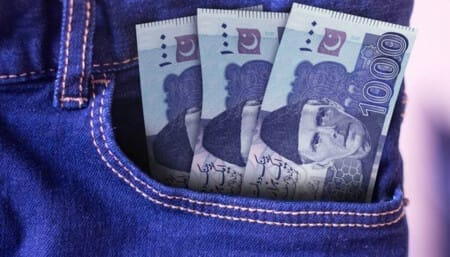Asian shares are on track to break a three-week losing streak, with the MSCI’s broadest index of Asia-Pacific shares outside Japan holding steady. Chinese stocks are ending the week on a strong note, thanks to policy support from Beijing that has restored fragile investor confidence.
Could a potential rescue package be the catalyst that Asia’s markets have been waiting for? As the week concludes, investors are eyeing the Asian shares with renewed interest, with the expectation to break a three-week losing streak. The mood is cautiously optimistic, propelled by China’s aggressive policy support moves aiming to stabilize its stock market and spur economic recovery.

The MSCI broadest index of Asia-Pacific shares outside Japan maintaining stability is a sign that investor sentiment could be turning the corner after a prolonged period of uncertainty. Despite thin trading, with Australia on holiday, Chinese stocks are showing promise of resilience. The blue-chip index is making modest advances, and the Shanghai Composite is tracking toward a significant weekly rise, indicating that investor confidence may be on the mend.
China’s central bank’s decision to slash bank reserves, freeing up approximately $140 billion into the banking system, is a bold step towards economic recovery. This move aligns with reports of a sizable stabilization fund backed by Chinese state-owned enterprise offshore accounts, aimed at bolstering share purchases. However, seasoned market experts like John Pinkel of Indus Capital advise caution, noting a blend of pressures from structured product selling, fund closures, and ongoing uncertainty about Beijing’s market commitment. It highlights a sentiment that while there is hope, the journey ahead is fraught with challenges.
Read: SBP Reserves Hits 6-Month High at $8.27bn
In Japan, the landscape is equally dynamic. The Nikkei has experienced a retreat from a 34-year peak as market participants anticipate changes in the Bank of Japan’s monetary policy. The latest minutes revealing plans for debate on the timing and pace of interest rate hikes underscore this point. Concurrently, Tokyo’s core inflation data presents a mixed picture, sliding below the central bank’s target, signaling complexities in the economic climate.
Turning our gaze to Europe, the European Central Bank holds steady on interest rates while signaling readiness to pivot if inflation retreats. The suggestion of a potential rate cut as early as June, if data permits, adds another layer to the complex global economic tapestry.
The broader market is fixated on the United States, where the personal consumption expenditures price index is due for release. The core PCE index, a bellwether for the Federal Reserve’s inflation assessment, is expected to reflect a 3% annual rise. Encouragingly, the US economy demonstrated resilience with stronger-than-anticipated growth and consumer spending in Q4, defying recessionary fears. This economic fortitude is reflected in subsiding Treasury yields, indicative of easing inflation concerns.
In the currency arena, the dollar’s strength on the back of robust GDP data has ripple effects, causing slight dips in sterling and the Australian dollar. On the commodities front, oil prices, despite a slight decline, remain affected by geopolitical tensions, which could disrupt global trade. Gold maintains its luster, trading at a premium.
As we assess these developments, it’s clear that the Asian market’s potential turnaround, buoyed by China’s policy decisions, could mark a pivotal moment in the region’s economic outlook. Yet, alongside these bright spots, caution remains the watchword against a backdrop of fluctuating policies, inflation concerns, and geopolitical shifts.
Our Recommendations
In light of this multifaceted landscape, “INDEPENDENT” offers pragmatic insights for navigating these markets. Investors should consider a diversified approach, balancing cautious optimism in Asian equities with a keen eye on policy shifts and their cascading effects. With China showing signs of economic revitalization, targeted investments in recovering sectors could offer growth opportunities, but they must be tempered with diligence, given the market’s inherent volatility.
For those looking to tread in the currency markets, staying attuned to central bank cues is paramount. The Euro’s movements against the backdrop of ECB’s potential rate adjustments present both risks and prospects. Similarly, the dollar’s current trajectory underscores the need for vigilance as the Fed’s inflation stance unfolds.
In commodities, the sustained value of gold suggests it remains a reliable hedge amid uncertainty. Oil, while subject to geopolitical risk, demands a strategy that accounts for both current tensions and long-term energy transition trends.
Our parting advice is resilience. In a world of shifting economic currents, investors need to remain adaptable, informed, and always ready to recalibrate their strategies to stay afloat and thrive. With an eye on reliable data and a finger on the pulse of global policy shifts, opportunity can be found even in the most challenging of times.
What’s your take on this? Let’s know about your thoughts in the comments below!












